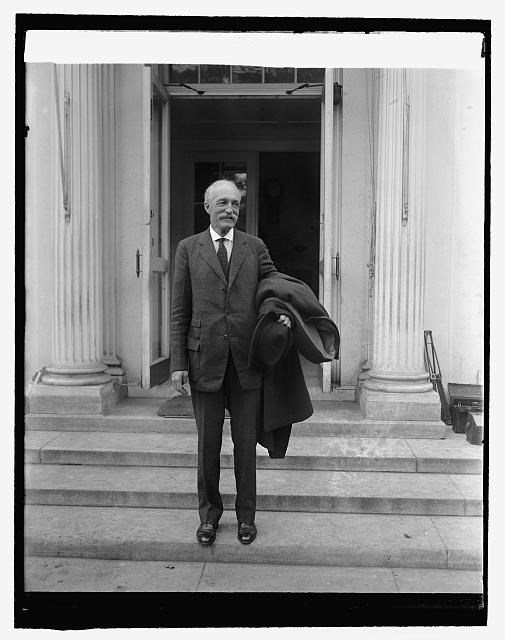Last updated: May 9, 2018
Article
Gifford Pinchot: The Father of Forestry

Library of Congress Photo
Gifford Pinchot was an important figure in the American conservation movement. As the first chief of the US Forest Service, Pinchot tripled the nation’s forest reserves, protecting their long term health for both conservation and recreational use.
Unlike some other seminal figures of the conservation movement, Pinchot was more interested in the practical elements of conservation and less preoccupied with the spirituality of nature. He saw protecting the parks as a “social good” and recognized that national forests had value not only because of their beauty but also because of the resources they provided to citizens. Part of this recognition came from Pinchot’s personal background. His family fortune had been earned in the sale of products coming from forests. Consequently, Pinchot was encouraged by his father to become a forester and had a unique recognition for the role that well-managed forests played in sustaining the livelihood of families that relied on natural resources for income.
Pinchot also played an important role in beginning the Yale School of Forestry, encouraging his wealthy family members to donate to the school. At Yale, Pinchot became a leader in sustainable resource management. In 1900, he founded the American Society of Foresters to increase awareness of forestry and provide professional development opportunities for those interested in making a career of protecting woodlands.
When Teddy Roosevelt created the position of chief of the US Forest Service in 1905, Pinchot was the obvious choice. Pinchot served in this role for five years under Roosevelt and then under President Taft until 1910. He worked to promote efficiency in resource use and to cut back on waste in the forests, utilizing the whole of felled trees.
Pinchot clashed with other leaders of the environmental movement, including John Muir, in the debate over the damming of the Hetch Hetchy Valley in Yosemite National Park. Although the Hetch Hetchy was a place of great beauty, Pinchot’s personal priorities lay in providing resources to a growing citizenry. Consequently, he disagreed with Muir about the ethics of damming the valley and supported the creation of a water reservoir.
Pinchot also worked with the National Conservation Commission in 1910. The commission was started by Teddy Roosevelt and conducted over 200 studies on the lands of North America. For a brief period, Pinchot served as the chairman of its executive committee. Eventually, Pinchot left the world of forestry to aim for higher offices in politics, becoming the governor of Pennsylvania in 1922. However, he always remained a staunch advocate for conservation and natural resource management. His legacy can now be remembered via the Pinchot Institute for Conservation, a policy organization that advocates for his ideals and promotes clean water, air, and responsible resource management.
